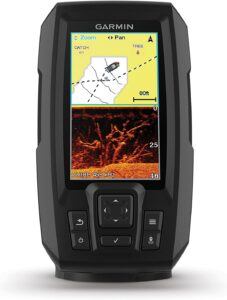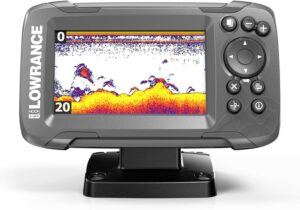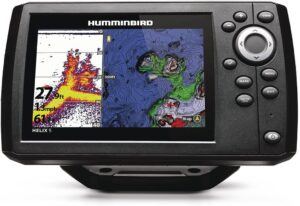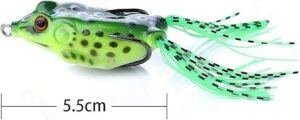Best Entry Level Fish Finders
If you’re just getting your feet wet in the world of angling, you might be curious about the gadgets seasoned fishermen swear by. I’m talking about fish finders, a game-changer for anyone looking to make their fishing trips more productive and enjoyable. It’s not just about hoping for the best when you cast your line; it’s also about knowing what’s happening beneath the water’s surface.
Fish finders have come a long way since their inception, evolving from simple sonar devices to sophisticated marine technology that can guide even the greenest of anglers to a bountiful catch. If you’re new to this, understanding how they function is key. At its core, a fish finder uses sonar technology to send out sound waves, which bounce back with details of what lies below: think fish, but also rocks, weeds, and terrains.
Knowing the basics of what makes a fish finder tick is crucial for beginners. You want to make sure that you’re choosing a device that doesn’t require a deep dive into the manual every time you use it. This includes getting familiar with important features like sonar readings, depth capabilities, and whether the device includes GPS, which can be a lifesaver (sometimes quite literally).
But why do you need one? Well, imagine being able to see where the fish are hanging out, or deciphering which spots to avoid because they’re just clusters of logs. That’s the power of a fish finder. It’s like having a window into the aquatic world, one where the fish can’t hide. And for someone who’s just starting, it can make the difference between a frustrating day on the water and an exciting one filled with catches.
Key Features to Look for in an Entry-Level Fish Finder
When you’re dipping your toes into the angling world, the right gear can make a huge difference. An entry-level fish finder doesn’t have to be fancy, but it should definitely make fishing more productive and enjoyable. Here’s what to keep an eye out for:
First off, prioritize ease of use. You want a device with a user-friendly interface that won’t have you flipping through a manual every time you hit the water. Look for intuitive controls and a straightforward menu. After all, you’re there to fish, not to wrestle with technology.
Screen readability is crucial. A good rule of thumb is to choose a screen that’s at least four inches diagonal, with a resolution that makes images crisp and clear. Color screens can enhance the readability, but if you’re on a tight budget, grayscale will still get the job done.
The transducer is where the magic happens; it sends and receives the sonar waves that locate fish. You’ll encounter terms like ‘frequency’ and ‘cone angle’. High frequencies are best for shallow water, while low frequencies are your friends in deeper spots. Cone angle affects the coverage area – a wider angle means more water under your gaze.
Many entry-level models now include some form of GPS integration. This not just helps you navigate unfamiliar waters but also lets you bookmark those hotspots where you’ve found success. Remember, a fish finder with GPS is like having a seasoned local pointing out all the best fishing spots.
Finally, durability and a waterproof design are non-negotiables. Be sure to check the IPX rating – this tells you just how ‘waterproof’ your device will be as it inevitably takes a splash or two. An entry-level fish finder needs to withstand the learning curve, which can sometimes be a bit wet and wild.
Review of the Top Entry-Level Fish Finders on the Market
When you’re just starting out, the multitude of options for fish finders can seem overwhelming. You want something that won’t break the bank but still proves to be a reliable fishing companion. That’s where entry-level fish finders come into play. They’re designed for simplicity and effectiveness, allowing you to focus on the joy of fishing without getting bogged down by complex technology.
Let’s touch on a few models that have gained popularity for their balance of features and affordability. The Garmin Striker 4, for example, is revered for its clear display and intuitive navigation. Its built-in GPS is a standout feature that marks waypoints, a boon for beginners who are just learning to navigate water bodies.
Another front runner is the Lowrance HOOK2 4X, with its auto-tuning sonar. For novices, this means less time fiddling with settings and more time fishing. It’s an ideal match for someone who values a ‘plug and play’ experience.
The Humminbird HELIX 5 is a name that surfaces often among the angling community, recognized for its dual-beam sonar that gives a more detailed view of fish and structures. The HELIX 5’s user-friendly interface eases the learning curve, which is a significant plus for those new to using fish finders.
User reviews often shed light on real-world usage, and these entry-level models are generally met with positive feedback from the beginner community. Many appreciate the straightforward setup, which is critical when you’re eager to start casting lines.
Another aspect to consider is the post-purchase support. Garmin, Lowrance, and Humminbird all offer solid warranty and customer service, which can be invaluable if you encounter any hiccups with your device.
Keep in mind that the best fish finder for you might not be the one with the most bells and whistles, but rather the one that meets your specific needs. Would you prefer an easier-to-read display, or are you looking for greater detail with a bit more complexity? These are the kinds of questions you’ll want to answer as you explore your options.
Getting the Most Out of Your Fish Finder: Tips and Tricks for Beginners
Now, you’ve got yourself an entry-level fish finder. That’s just the start of it. To really reel in the benefits, there’s a bit more to learn. I’m here to help you with that step. Understanding what’s on the screen can feel like learning a new language at first, but you can always adjust your approach down the road as you become more familiar.
Choose settings that resonate with you. If there’s too much noise on the display, you might want to reduce the sensitivity. Conversely, if you’re fishing in deeper waters, you might need to increase it. Remember, your first attempt doesn’t need to be your last. Tweaking your fish finder settings as you go is the best way to learn.
Installing your fish finder correctly can greatly influence its effectiveness. Don’t worry too much about getting it perfect on the first try. Most models come with clear instructions and also remember that there’s a lot of opportunity in online forums and videos where you can learn from others’ experiences.
Maintenance is key. Keep your device clean and dry when not in use, and protect it from extreme temperatures. Treat it well, and it’ll certainly return the favor when you’re out on the water.
In my opinion, one of the most underrated aspects of angling technology is the community around it. There are tons of anglers who love to share their fish finding wisdom. Dig into fishing forums, join a local angling community, or check out videos from seasoned fish finders. There’s a wealth of knowledge waiting for you.
I really hope that by now, you feel excited and ready to make the most of your new aquatic companion. Just don’t focus too much on perfection; fishing is as much about enjoying the experience as it is about the catch. Happy fishing!






